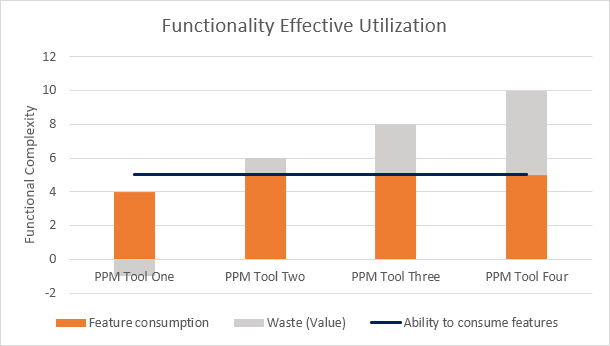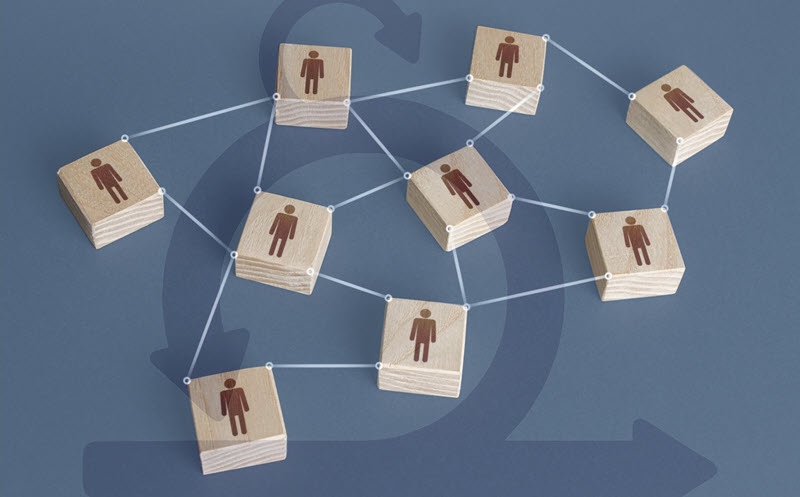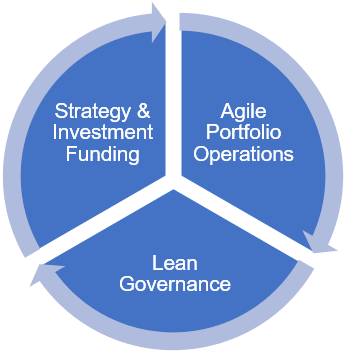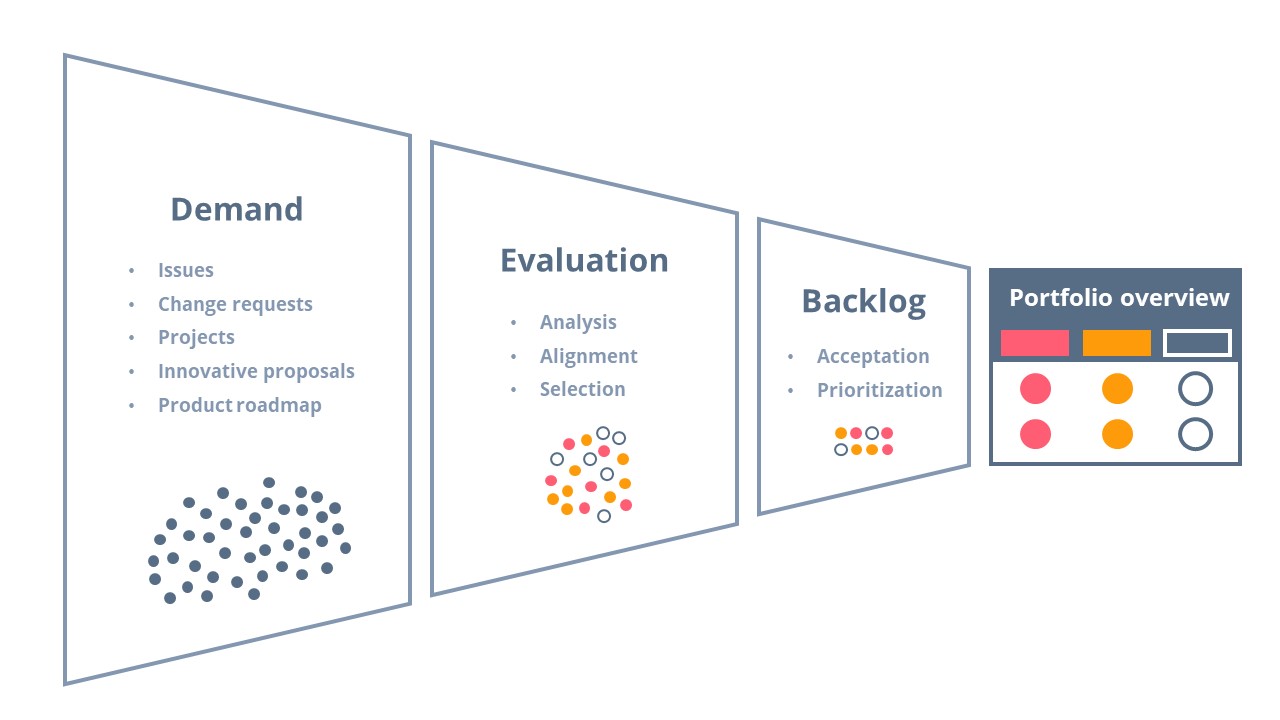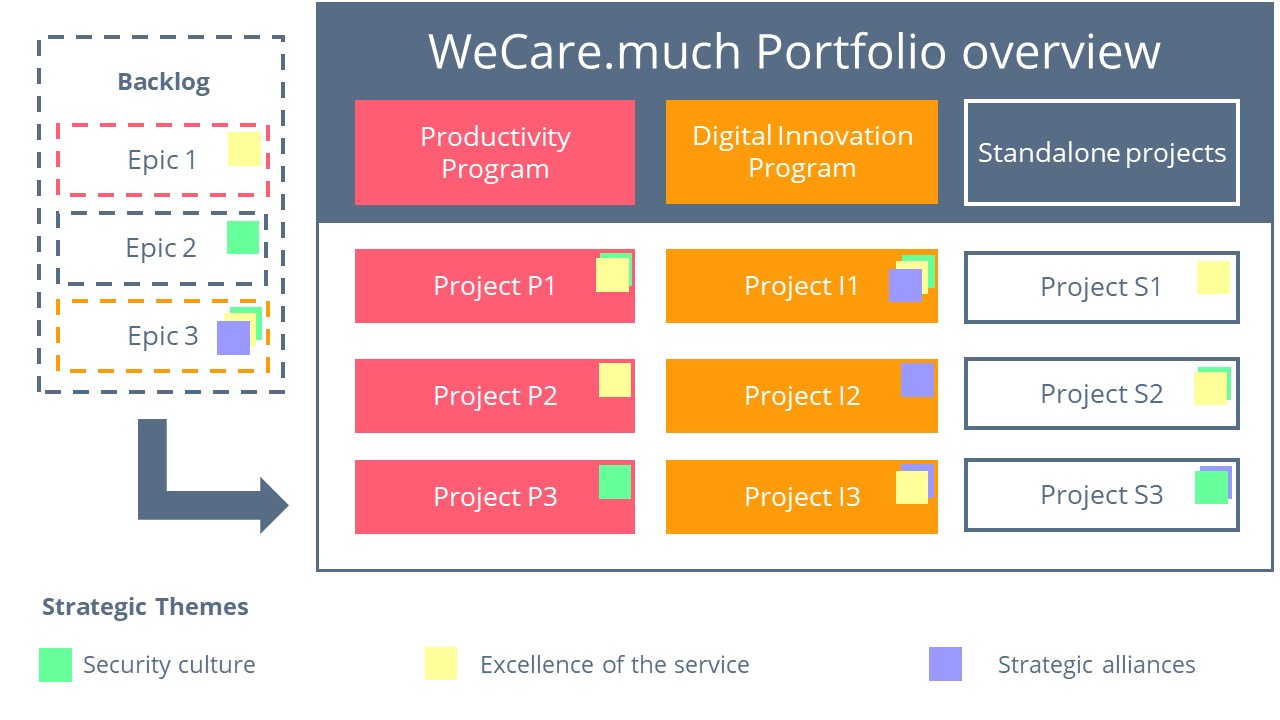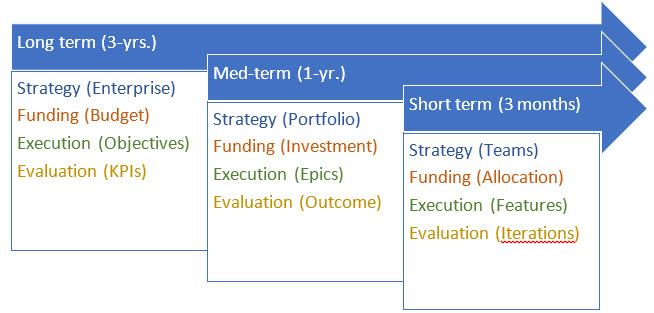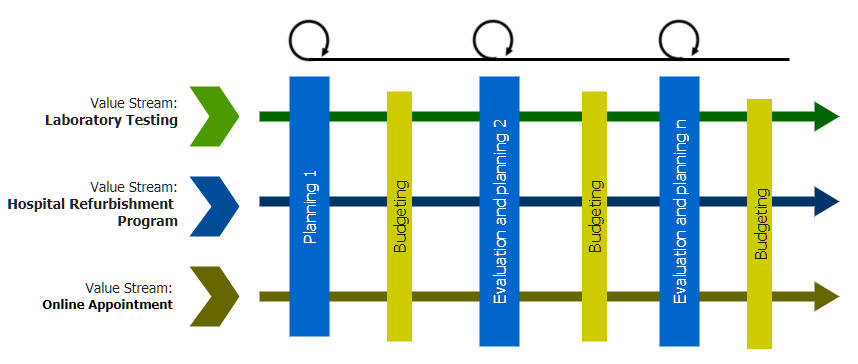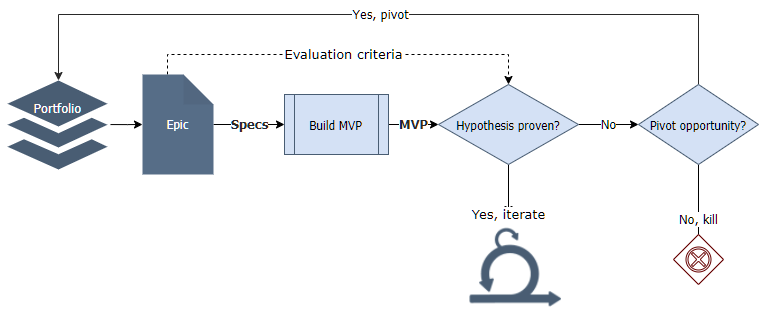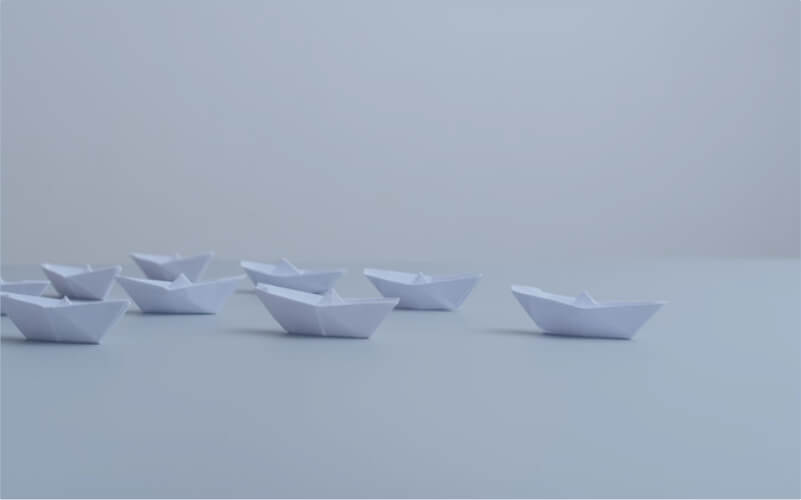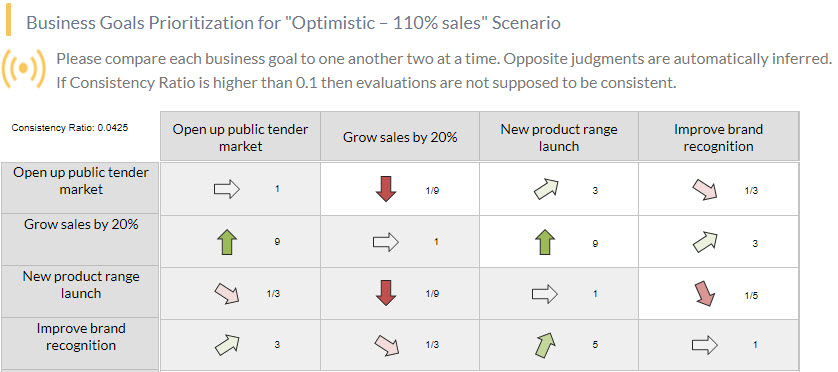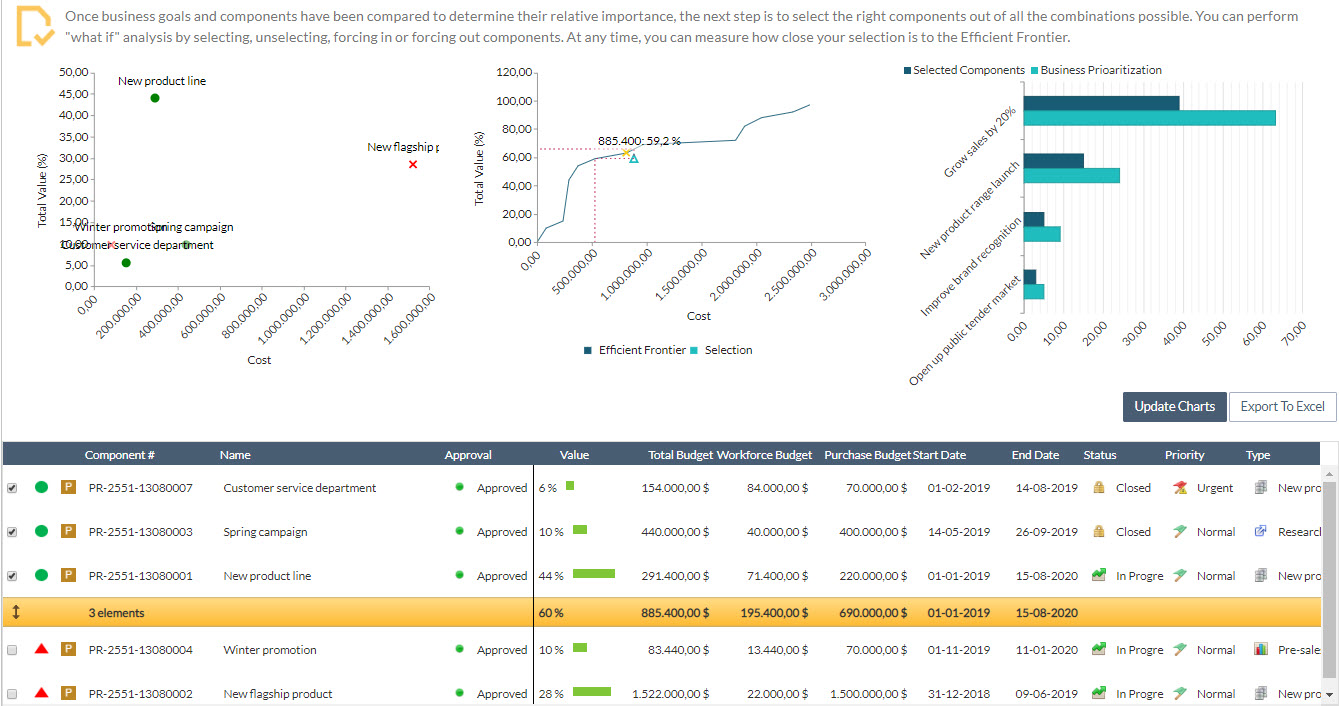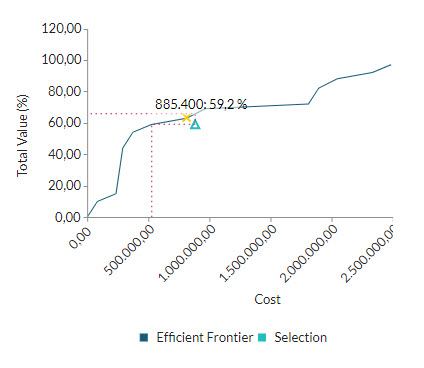
1. Overview of Revenue Models in Project Management
Choosing the right revenue model can make or break both profitability and client satisfaction. Whether it's Fixed Price, Time and Materials (T&M), or Hourly Billing, each model serves a unique purpose. However, organizations must align their billing practices with their broader goals to truly thrive.
At OptiConsult, a growing consultancy, project manager Morgan is tackling balancing revenue optimization with maintaining client trust. The firm has long favored Fixed-Price contracts for their predictability, but Morgan is beginning to question whether this model sacrifices too much flexibility. To improve transparency and adapt to client needs, they are considering a shift towards Hourly Billing—a move that could redefine how they do business.
Too busy to read? Tune into the podcast instead.
Understanding Project Revenue Models
- Fixed Price Contracts: Clients pay a predetermined amount for a project, regardless of the time and resources invested. While this model offers certainty for clients, it can lead to scope creep and reduced profitability if not carefully managed.
- Time and Materials (T&M): Clients are billed based on the time spent and materials used. This model provides flexibility but can lead to unpredictability in costs for clients.
- Hourly Billing: A subset of T&M, hourly billing charges clients for the hours worked, often with predefined hourly rates. It combines flexibility with transparency, allowing for adjustments as project scopes evolve.
Morgan realizes that Hourly Billing fits well within OptiConsult's services, especially for projects where requirements may change or are not fully defined at the outset. By billing clients based on actual hours, the firm can adapt to changes without renegotiating contracts, and clients appreciate the transparency in billing.
The Importance of Hourly Billing
Hourly billing brings several benefits to both service providers and clients:
- Flexibility: Adjusts to changes in project scope without the need for contract amendments.
- Transparency: Clients can see where time is spent, building trust.
- Adaptability: Rates can be customized based on the expertise required for specific tasks.
- Improved Profitability: Aligns revenue with effort, reducing the risk of underestimating project costs.
For Morgan, implementing hourly billing means that OptiConsult can better manage resources and timelines, ensuring that the company is compensated fairly for the work performed. It also fosters stronger client relationships, as clients are informed about how their investment is utilized.
Applying Hourly Billing to Internal Projects
Hourly billing isn't just beneficial for client-facing projects; it can also revolutionize internal project management. By treating internal initiatives as profit centers, organizations can:
- Enhance Accountability: Team members become more conscious of how they spend their time.
- Improve Resource Allocation: Managers can identify which projects consume the most resources and adjust accordingly.
- Facilitate Cost-Benefit Analysis: Companies can better assess the return on investment for internal projects by assigning a monetary value to internal efforts.
At OptiConsult, Morgan proposes applying hourly billing practices to internal projects like system upgrades and process improvements. By doing so, the company can ensure that internal efforts are aligned with strategic objectives and that resources are utilized efficiently.
2. Setting Up Effective Hourly Billing Practices
With a clear understanding of the benefits of hourly billing, Morgan at OptiConsult moves on to setting up effective practices that align with both the company's goals and client expectations. A critical aspect of this setup involves choosing the right pricing strategies to ensure profitability and competitiveness.
Standard Hourly Rates vs. Custom Rates
At OptiConsult, standard hourly rates for different professional roles have been the default approach. This method simplifies billing and ensures consistency across projects. Standard rates make it easier for the accounting team to generate invoices and for clients to anticipate costs, fostering a sense of reliability.
However, Morgan recognizes that custom rates can be advantageous in certain situations. For instance, a high-profile client might require specialized expertise or faster turnaround times, justifying a higher rate. Alternatively, offering discounted rates to a non-profit organization could build goodwill and long-term partnerships.
When to Implement Custom Rates:
- Project Complexity: Complex projects requiring niche skills may warrant higher rates.
- Client Relationships: Long-term clients might receive custom rates as part of a loyalty program.
- Market Conditions: Competitive markets might necessitate custom rates to win contracts.
Balancing standard and custom rates allows OptiConsult to tailor pricing for each client while maintaining the company's profitability.
Professional Category Pricing
Another strategy Morgan employs is assigning rates based on professional categories. Each role—such as junior consultant, senior analyst, or project lead—has an associated hourly rate reflecting their expertise and value contribution.
Benefits of Professional Category Pricing:
- Maintains Profitability: Ensures higher-cost resources are billed at rates reflecting their experience.
- Simplifies Budgeting: Facilitates accurate project budgeting and financial forecasting.
- Promotes Fairness: Provides a transparent structure that can be communicated to clients.
For example, billing a senior analyst at a junior consultant's rate could erode profit margins. OptiConsult ensures that each team member's time is valued appropriately by adhering to professional category pricing.
Billing Categories and Rate Overrides
While standard rates and professional categories provide a solid foundation, Morgan understands the need for flexibility. Occasionally, specific tasks or resources require billing categories that override default rates.
Introducing Billing Categories:
- Task-Specific Rates: Certain tasks may be billed at different rates due to their nature or urgency.
- Resource Overrides: Individual team members with unique skills might have custom rates for particular projects.
By implementing billing categories, they can adjust rates for:
- Special Projects: Charging a premium for projects requiring expedited delivery.
- Discounted Services: Offering reduced rates for strategic partnerships or community initiatives.
- Client Agreements: Honoring negotiated rates that differ from standard pricing.
Advantages of Rate Overrides:
- Tailored Billing Strategies: Allows OptiConsult to meet diverse client needs without overhauling the entire pricing model.
- Competitive Edge: Provides flexibility to adjust rates in response to market demands.
- Simplified Management: Billing categories can be managed within the existing financial system, avoiding complexity.
Morgan ensures these overrides are applied carefully to protect overall profitability. Documenting the reasons for rate changes and securing necessary approvals helps OptiConsult maintain transparency and accountability in its billing practices.
3. Billing Methods and Calculations
Having established effective hourly billing practices, Morgan at OptiConsult focuses on selecting suitable billing methods and calculations to support the company's revenue management. Choosing the appropriate billing method matters to capture the services' value and ensure client satisfaction accurately.
Billing by Completed Tasks vs. Billing by Resources
To determine the best fit for OptiConsult's projects, Morgan evaluates two primary hourly billing methods to balance company needs with client expectations.
Billing by Completed Tasks
Overview: Billing occurs upon completing specific tasks or milestones, each assigned an estimated number of hours and a corresponding rate.
Ideal For: Projects with clearly defined deliverables and timelines.
Advantages:
- Predictability: Clients know costs upfront.
- Efficiency Incentive: Teams are motivated to complete tasks promptly.
- Simplified Invoicing: Billing tied to task completion is straightforward.
Challenges:
- Scope Changes: Adjustments can complicate billing.
- Estimate Accuracy: Discrepancies between estimated and actual hours can affect profitability.
Morgan's Application: For projects like market research studies, where phases are distinct, Morgan uses billing by completed tasks to provide clarity and predictability.
Billing by Resources Over Time
Overview: Billing is based on the actual time people spend on a project within a billing period (e.g., weekly or monthly).
Ideal For: Ongoing services, support contracts, or projects with evolving scopes.
Advantages:
- Flexibility: Adapts to changes without renegotiating contracts.
- Accuracy: Clients are billed for exact hours worked.
- Efficient Resource Use: Encourages effective time management.
Challenges:
- Cost Uncertainty: Clients may find total costs harder to predict.
- Administrative Effort: Requires meticulous time tracking and reporting.
Morgan's Application: For long-term consultancy engagements with shifting requirements, Morgan opts for billing by resources over time, allowing OptiConsult to meet client needs while ensuring fair compensation.
Estimated Hours vs. Actual Hours
Another key decision is whether to bill based on estimated or actual hours, impacting profitability and client satisfaction.
Estimated Hours
Overview: Billing uses the projected time a task or project is expected to take.
Advantages:
- Predictability: Clients receive a clear upfront cost.
- Simplified Billing: Reduces administrative tasks by relying on initial estimates.
Challenges:
- Profitability Risk: If actual hours exceed estimates, profits can suffer.
- Client Trust: Overestimating may lead to dissatisfaction if clients feel overpaying.
Morgan's Consideration: For routine tasks with slight variation, Morgan uses estimated hours, ensuring accuracy by involving experienced team members in the planning process.
Actual Hours
Overview: Billing is based on the actual time recorded by team members working on the project.
Advantages:
- Fairness: Clients pay for the exact time spent.
- Flexibility: Accommodates scope changes or unforeseen challenges.
Challenges:
- Cost Overruns: Projects taking longer can increase client costs.
- Administrative Load: Requires diligent time tracking, which can complicate invoicing.
Morgan's Consideration: For projects with uncertain scopes, Morgan prefers billing based on actual hours, maintaining open communication to manage client concerns about costs.
Billing Methods and Calculations Summary
| Billing Method | Overview | Ideal For | Advantages | Challenges |
| Billing by Completed Tasks | Billing occurs upon completing specific tasks or milestones, each assigned an estimated number of hours and rate. | Projects with clearly defined deliverables and timelines. | Predictability, Efficiency Incentive, Simplified Invoicing | Scope Changes, Estimate Accuracy |
| Billing by Resources Over Time | Billing is based on the actual time spent within a billing period (e.g., weekly or monthly). | Ongoing services, support contracts, or projects with evolving scopes. | Flexibility, Accuracy, Efficient Resource Use | Cost Uncertainty, Administrative Effort |
| Estimated Hours | Billing uses the projected time a task or project is expected to take. | Routine tasks with slight variation. | Predictability, Simplified Billing | Profitability Risk, Client Trust |
| Actual Hours | Billing is based on the actual time recorded by team members working on the project. | Projects with uncertain scopes. | Fairness, Flexibility | Cost Overruns, Administrative Load |
Configuring Projects for Hourly Billing
Having decided on the appropriate billing methods, Morgan configures projects within OptiConsult's management system, bridging strategy and execution.
Best Practices for Configuration:
- Select the Appropriate Revenue Method:
- Set Billing Method: Align the billing method with the project's nature—by completed tasks or by resources over time.
- Define Hourly Rates: Ensure rates are accurately assigned, whether standard, custom, or overridden.
- Enable Flexibility:
- Allow Adjustments: Configure the system to permit changes between estimated and actual hours when necessary.
- Set Permissions: Control who can modify billing settings to maintain accountability.
- Incorporate Non-Billable Hours:
- Enable Non-Billable Logging: Team members can log non-billable hours for comprehensive tracking.
- Establish Guidelines: Define what constitutes non-billable time.
- Automate Calculations:
- Use Software Tools: Leverage project management software for automatic revenue calculations based on configurations.
- Keep Data Updated: Regularly update project data to ensure accurate billing.
Morgan's implementation: Through careful project configuration, Morgan ensures billing accurately reflects the work performed, fosters transparency with clients, and improves administrative efficiency by leveraging automation.
4. Managing Non-Billable Hours and Revenue Leakage
As Morgan continues to refine OptiConsult's hourly billing practices, a critical area of focus emerges: managing non-billable hours and preventing revenue leakage. If not adequately controlled and tracked, non-billable time can significantly impact the company's profitability. Morgan aims to establish clear policies and practices to address these challenges.

Policies for Non-Billable Hours
Non-billable hours refer to the time team members spend on activities that are not directly billable to clients. These can include:
- Training and Professional Development: Attending workshops, certifications, or internal training sessions.
- Administrative Tasks: Internal meetings, reporting, and administrative duties.
- Internal Projects: Work on company initiatives that don't generate immediate revenue.
While non-billable activities are essential for business growth and employee development, they must be managed effectively to minimize their impact on revenue.
Guidelines for Managing Non-Billable Time:
- Set Clear Policies:
- Define Non-Billable Activities: Specify which activities are considered non-billable.
- Allocate Time Budgets: Set limits on time spent on non-billable tasks.
- Prioritize Billable Work:
- Encourage team members to focus on billable tasks during peak hours.
- Schedule non-billable activities during slower periods or off-peak times.
- Monitor Non-Billable Hours:
- Regularly review non-billable time to identify trends or areas of concern.
- Adjust policies as needed to ensure they remain effective.
Morgan's implementation: OptiConsult introduces a policy where team members can allocate up to 10% of their weekly hours to non-billable activities like training and internal meetings, ensuring that the majority of time is dedicated to client work, thereby protecting the company's revenue.
Time Tracking Practices
Revenue leakage occurs when billable work is not captured and invoiced appropriately. Even small amounts of untracked time can add up, significantly affecting profitability.
Strategies for Effective Time Tracking:
- Implement User-Friendly Tools:
- Use intuitive time-tracking software that integrates with project management and billing systems.
- Ensure the tool allows for easy entry of both billable and non-billable hours.
- Establish Consistent Processes:
- Require daily or real-time logging of hours to increase accuracy.
- Provide guidelines on how to categorize time entries.
- Train Team Members:
- Conduct training sessions on the importance of time tracking.
- Share best practices and common pitfalls to avoid.
- Regular Audits:
- Perform periodic reviews of time logs to identify discrepancies.
- Address any issues promptly with the team.
Morgan's Approach: Roll out a new time-tracking system at OptiConsult that prompts consultants to log their hours daily. The system distinguishes between billable and non-billable hours and is configured to prevent submission without complete entries. They also schedule monthly audits to ensure compliance and accuracy.
Avoiding Scope Creep
Scope creep occurs when a project's requirements expand beyond the original agreement without adjustments to timeframes or budgets. This can lead to unbilled work and erode profitability.
Strategies to Manage Scope Creep:
- Clear Contracts and Agreements:
- Define Project Scope: Clearly outline deliverables, timelines, and responsibilities in the contract.
- Include Change Control Clauses: Specify how scope changes will be handled and billed.
- Effective Communication:
- Regular Updates: Keep clients informed about project progress and any potential issues.
- Document Changes: Record all client requests and approvals for scope adjustments.
- Proactive Management:
- Monitor Project Scope: Continuously compare actual work against the agreed-upon scope.
- Address Changes Promptly: Discuss any deviations with the client immediately.
- Adjust Billing Accordingly:
- Amend Contracts if Necessary: Update agreements to reflect new requirements.
- Bill for Additional Work: Ensure that any extra work is captured in billing.
Morgan's Experience:
In a recent project, OptiConsult noticed that the client requested additional features not included in the original scope. To address this, they:
- Scheduled a meeting: Discussed the additional requests with the client to understand their needs.
- Revised the agreement: Provided a proposal outlining the impact on timelines and costs.
- Obtained approval: Ensured the client agreed to the new terms before proceeding.
Proactively managing scope creep, Morgan prevented unbilled work and maintained the project's profitability.
Incorporating Non-Billable Hours in Billing Calculations
While non-billable hours are not charged to the client, accounting for them in billing calculations is relevant to ensure overall profitability.
Considerations:
- Overhead Allocation: Factor non-billable time into overhead costs, which can be incorporated into billable rates.
- Productivity Metrics: Use the ratio of billable to non-billable hours to assess team efficiency.
5. Assigning Billing Categories and Flexibility in Billing
As OptiConsult continues optimizing its billing practices, the need for flexibility in assigning billing categories becomes apparent. Different projects and tasks often require unique considerations, and adapting billing rates accordingly can enhance client satisfaction and profitability.
Reassigning Professional Categories for Specific Tasks
At OptiConsult, team members are typically assigned billing rates based on their professional categories, such as junior consultant, senior analyst, or project lead. However, there are situations where reassigning these categories for specific tasks makes sense.
Adding Flexibility Through Billing Categories:
- Specialized Expertise: Certain tasks may require specialized skills beyond a team member's usual role. For example, a junior consultant with expertise in a niche software tool might be billed at a higher rate for tasks utilizing that skill.
- Task Complexity: Complex or high-stakes tasks may justify higher billing rates, even if performed by team members with lower professional categories.
- Client Requirements: Clients may request specific team members for their expertise, allowing for rate adjustments to reflect the value provided.
Examples:
- Cybersecurity Assessment: Morgan assigns a senior analyst to perform a cybersecurity assessment, a task requiring specialized knowledge. Although the analyst's standard rate is $150/hour, for this task, Morgan reassigns the billing category to reflect a rate of $200/hour due to the expertise involved.
- Urgent Support Requests: A client requires immediate support outside of regular hours. Morgan reassigns the billing category for the responding consultant to include an emergency service rate.
Reassigning professional categories for specific tasks ensures that OptiConsult's billing accurately reflects the value delivered, allowing the company to be properly compensated for specialized services..
Tailoring Billing Rates per Project or Client
Adjusting billing rates to meet unique client agreements in a competitive marketplace can be a strategic move. However, you must balance customization with maintaining profitability.
Strategies for Tailoring Rates:
- Volume Discounts: Offering reduced rates for clients who commit to a large volume of work or long-term contracts.
- Strategic Partnerships: Providing preferential rates to clients in exchange for future business opportunities or referrals.
- Market Positioning: Adjusting rates to enter new markets or sectors where OptiConsult seeks to establish a presence.
Balancing Customization and Profitability:
- Cost Analysis: Conduct a thorough cost analysis before offering adjusted rates to ensure reduced rates will not compromise profit margins.
- Value Proposition: Emphasizing the value provided at the customized rate helps maintain perceived service quality.
- Contractual Safeguards: Including clauses allowing rate reviews or adjustments after a certain period.
Example:
- Non-Profit Organization: OptiConsult aims to expand its services into the non-profit sector. Morgan negotiates a tailored rate with a prominent non-profit client, offering a 15% discount off standard rates. The agreement includes a clause for rate reassessment after one year, ensuring that the partnership benefits both parties.
Thoughtfully tailoring billing rates allows OptiConsult to secure new business and build strong client relationships, all while safeguarding financial health.
Adjusting for Overtime and Special Circumstances
Projects sometimes go differently than planned, requiring team members to work overtime or under particular conditions.
Policies for Handling Overtime:
- Overtime Rates: Establish clear policies that define overtime rates, typically higher than standard rates to compensate for additional effort and potential employee burnout.
- Pre-Approval: Internal approval is required before team members can log overtime hours to ensure it's necessary and justified.
- Client Agreements: Include terms specifying how overtime will be billed in client contracts.
Managing Client Expectations:
- Transparent Communication: Inform clients promptly when overtime work is anticipated, explaining the reasons and potential cost implications.
- Documentation: Keep detailed records of overtime work to support billing and address any client inquiries.
- Alternative Solutions: Where possible, offer options to adjust project timelines or scope to avoid overtime costs.
Special Circumstances:
- Travel Requirements: Additional expenses and billing rates may apply if a project requires team members to travel.
- Hazardous Conditions: Projects involving high-risk environments may warrant higher rates for the added complexity and insurance costs.
Implementing Policies:
- Standardize Special Rates: Define rates for exceptional circumstances and include them in the billing policies.
- Educate the Team: Ensure all team members understand the policies and procedures for logging overtime and exceptional circumstances.
Proactively managing overtime and particular circumstances allows OptiConsult to protect profit margins while delivering exceptional client service.
6. Revenue Forecasting and Financial Management
Effective financial planning is vital for sustaining profitability in an hourly billing model.
Forecasting Revenue from Hourly Billing
To predict future revenues, Morgan employs a combination of estimated hours and historical data:
- Utilizing Estimated Hours: For upcoming projects, Morgan aggregates the estimated billable hours based on project scopes and timelines. This provides a preliminary revenue projection that helps in setting financial expectations.
- Leveraging Historical Data: Analyzing past projects with similar scopes allows Morgan to refine estimates. Historical data reveals patterns in billing, resource utilization, and potential pitfalls, leading to more accurate forecasts.
Capacity Planning is also integral:
- Aligning Resources with Revenue Goals: By assessing the availability and workload of consultants, Morgan ensures that resource allocation supports the projected revenue. This alignment helps in avoiding overstaffing or understaffing, which can impact profitability.
Incorporating Overhead Costs into Bill Rates
Overhead costs—such as office space, utilities, equipment, and administrative salaries—affect the overall service cost. OptiConsult incorporates these costs into bill rates to maintain profitability:
- Calculating Total Overhead: Summarizes all indirect expenses.
- Allocating Costs Fairly: The overhead is distributed across the projected billable hours. This ensures that each project contributes its fair share to cover operational expenses.
- Adjusting Bill Rates Accordingly: Adding a portion of the overhead to the standard billing rates accounts for these hidden costs without surprising clients with additional fees.
Balancing Billable and Non-Billable Time
Maximizing billable hours is interesting, but overworking staff can lead to burnout and decreased productivity. These are strategies to balance billable and non-billable time:
- Scheduling Non-Billable Activities Strategically: Non-billable tasks like training, team meetings, and administrative duties are scheduled during slower periods to minimize impact on revenue.
- Setting Targets for Billable Hours: establish realistic utilization rates for consultants (e.g., aiming for 80% billable time), leaving room for necessary non-billable activities.
- Monitoring and Adjusting: Regular reviews help you identify if non-billable time exceeds planned limits, allowing for scheduling or resource allocation adjustments.
These practices contribute to stable profitability and support the company's long-term business health.
7. Automation
Embracing automation is a step toward optimizing hourly billing revenue management. Leveraging technology enhances efficiency and accuracy and provides actionable insights, enabling organizations to focus more on delivering value to clients.
Automating Time Tracking and Invoicing
Implementing software tools for time tracking and invoicing offers several significant benefits:
- Reduced Human Error: Automation minimizes manual data entry, decreasing the likelihood of mistakes in recording hours or generating invoices.
- Streamlined Invoicing Processes: Automated systems can generate invoices quickly and consistently, improving cash flow and reducing administrative workload.
- Real-Time Data for Decision-Making: Access to up-to-date information on billable hours and project progress aids in making informed decisions promptly.
For example, time-tracking tools automatically log the hours team members spend on tasks, categorizing them as billable or non-billable. This data integrates with invoicing systems to ensure clients are billed accurately and on time.
Project Configuration Best Practices
Setting up projects effectively within management systems is crucial for supporting hourly billing:
- Define Default Settings: Establish standard billing rates, revenue recognition methods, and billing categories to maintain project consistency.
- Allow Project-Specific Overrides: Enable flexibility by permitting adjustments to default settings for individual projects or clients when necessary.
Tips for Effective Configuration:
- Use Templates: Create project templates with predefined settings to save time and ensure uniformity.
- Document Changes: Keep records of overrides or customizations for transparency and future reference.
- Train Team Members: Ensure staff are proficient with the management system to maximize its capabilities.
Leveraging Technology for Revenue Management
Robust tools enhance revenue management through advanced features:
- Customizable Billing Categories: Adjust billing rates for specific tasks or resources without overcomplicating the pricing model.
- Automated Revenue Calculations: Software can automatically calculate revenue based on configured rates and recorded hours, increasing accuracy and efficiency.
- Real-Time Reporting and Analytics: Access to current financial data allows for proactive management, identifying trends, and making strategic decisions.
Benefits:
- Increased Efficiency: Automation reduces manual tasks, freeing up time for strategic activities.
- Enhanced Accuracy: Automated calculations minimize the risk of billing errors.
- Better Financial Insight: Real-time analytics provide a clearer picture of the organization's financial health.
Technology enables organizations to improve their hourly billing practices, ensuring efficient and effective revenue management.
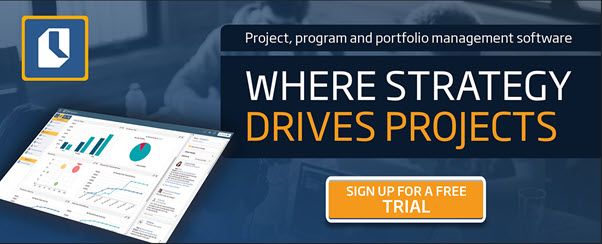
8. Client Communication and Transparency
Effective client communication and transparency in billing practices allow for building solid and long-lasting relationships. Morgan at OptiConsult understands that clients appreciate clarity and honesty, which can lead to increased trust and repeat business.
Communicating Billing Practices to Clients
Clear communication regarding billing methods and rates sets the foundation for a positive client relationship:
- Explain Billing Methods: At the outset of a project, Morgan explains how hourly billing works, including whether billing is based on estimated or actual hours and how rates are determined.
- Provide Detailed Proposals: Breaking down services, rates, and potential additional costs helps clients understand what to expect financially.
- Educate Clients: Sharing insights into the billing process, perhaps through informational materials or discussions, demystifies the process and builds trust.
Benefits:
- Reduces Misunderstandings: Clear explanations prevent confusion or disputes over invoices.
- Builds Confidence: Clients who understand how billing works are more likely to feel confident in the services provided.
OptiConsult’s approach:
- Initial Meetings: During initial consultations, Morgan thoroughly reviews the billing structure with the client.
- Written Documentation: All billing terms are documented in the contract, and clients are encouraged to ask questions. N
Building Trust Through Transparency
Transparency in billing practices strengthens client relationships:
- Detailed Invoices: Providing invoices that itemize services, hours worked, and rates allows clients to see exactly what they are paying for.
- Regular Updates: Keeping clients informed about project progress and any changes that may affect billing fosters openness.
- Access to Time Records: Offering clients access to time-tracking reports can further enhance transparency.
Examples of Transparent Practices:
- Monthly Reports: Morgan sends monthly reports summarizing work completed, hours billed, and any upcoming tasks.
- Open Communication Channels: Encouraging clients to discuss any billing concerns promptly ensures issues are addressed quickly.
Advantages:
- Enhances Trust: Transparency demonstrates integrity and honesty.
- Improves Client Satisfaction: Clients appreciate knowing where their investment is going.
Managing Client Expectations
Effectively managing client expectations is crucial, especially when project changes occur:
- Set Clear Expectations Early: Morgan ensures that clients understand the scope, timelines, and billing terms from the beginning.
- Use Detailed Contracts and Agreements:
- Outline Billing Terms: Contracts include detailed billing methods, rates, and payment schedules.
- Include Change Management Procedures: Agreements specify how changes to the project scope or requirements will be handled and billed.
- Communicate Changes Promptly:
- Inform Clients of Variations: If there are any deviations from the original plan, Morgan communicates these immediately.
- Provide Options: Presenting clients with choices on how to proceed empowers them and maintains satisfaction.
Strategies for Managing Expectations:
- Regular Check-Ins: Scheduled meetings to discuss progress and any concerns.
- Transparency About Challenges: Being upfront about potential delays or issues builds credibility.
Role of Contracts and Agreements:
- Legal Clarity: Contracts protect both OptiConsult and the client by clearly defining obligations.
- Reference Point: They serve as a reference throughout the project to ensure alignment with agreed terms.
Morgan's Practice:
- Customized Agreements: Tailoring contracts to each client ensures that unique needs and expectations are met.
- Review Sessions: Before finalizing agreements, Morgan reviews all terms with the client to confirm understanding.
9. Key Takeaways on Hourly Billing Revenue Management
Throughout this exploration of hourly billing revenue management, we've uncovered several critical strategies and best practices that can significantly enhance profitability and client satisfaction. Here are the essential takeaways to keep in mind:
1. Choose the Right Billing Methods and Practices
- Select Appropriate Billing Methods: Decide between billing by completed tasks or by resources based on project nature and client needs.
- Balance Estimated vs. Actual Hours: Understand the trade-offs between billing based on estimates for predictability and actual hours for accuracy.
- Configure Projects Effectively: Set up projects within your management system to support your chosen billing methods, allowing for necessary adjustments.
2. Implement Flexible Pricing Strategies
- Use Standard and Custom Rates: While standard rates provide consistency, custom rates allow you to tailor pricing for specific client needs or market conditions.
- Assign Billing Categories Thoughtfully: Reassign professional categories for specific tasks when specialized expertise is required, ensuring billing reflects the value delivered.
- Adjust for Overtime and Special Circumstances: Establish clear policies for handling overtime to protect profit margins and manage client expectations.
3. Prevent Revenue Leakage and Manage Non-Billable Hours
- Set Policies for Non-Billable Time: Clearly define non-billable activities and manage them to minimize impact on profitability.
- Implement Accurate Time Tracking: Use tools and practices to capture all billable time to prevent revenue leakage.
- Avoid Scope Creep: Proactively manage project scope through clear contracts and communication to ensure all work is appropriately billed.
4. Leverage Automation and Technology
- Automate Time Tracking and Invoicing: Utilize software tools to reduce human error and streamline billing processes.
- Configure Systems for Flexibility: Set default billing settings but allow project-specific overrides to adapt to unique needs.
- Utilize Advanced Features: Use technology offering customizable billing categories, automated revenue calculations, and real-time analytics.
5. Enhance Financial Management and Forecasting
- Forecast Revenue Accurately: Use estimated hours and historical data to predict revenue, aligning resource capacity with revenue goals.
- Incorporate Overhead Costs: Factor in all operational expenses when setting billing rates to maintain profitability.
- Balance Workloads: Strategically schedule non-billable activities and set realistic utilization targets to maximize efficiency without overworking your team.
6. Prioritize Client Communication and Transparency
- Communicate Billing Practices Clearly: Educate clients on billing methods and rates to build trust and prevent misunderstandings.
- Maintain Transparency: Provide detailed invoices and regular updates to foster strong client relationships.
- Manage Expectations Proactively: Set and manage client expectations, mainly when changes occur, with clear contracts outlining billing terms.
Sign up for a 14-day ITM Platform free trial



